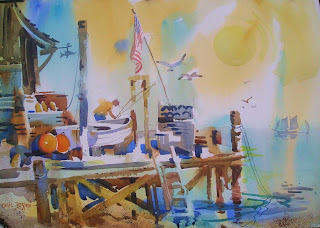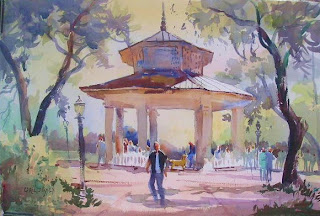
Wednesday, December 30, 2009
The One That Got Away

Monday, December 28, 2009
The Problem Is....
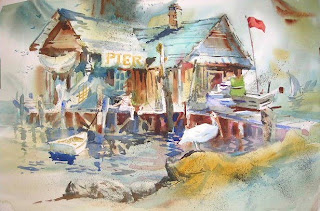
Saturday, December 26, 2009
Value Patterns
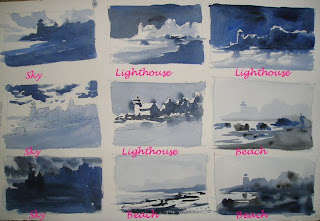
Thursday, December 24, 2009
Merry Christmas!
Wednesday, December 23, 2009
Change is Good
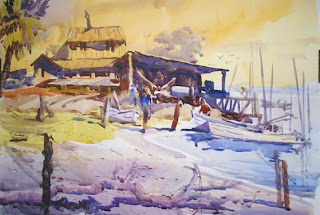
Monday, December 21, 2009
To Market, To Market
Saturday, December 19, 2009
Working the Wheel

Friday, December 18, 2009
'Round the Wheel

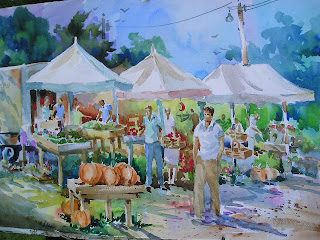
Monday, December 14, 2009
Market Series
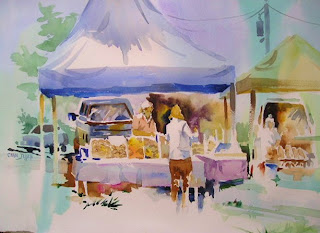
Saturday, December 12, 2009
Say It With Darks
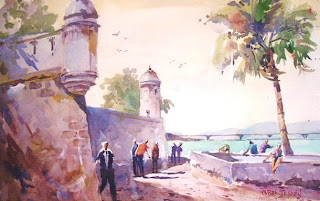
Thursday, December 10, 2009
Silhouette - Jackson Square
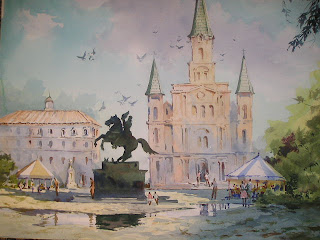
Wednesday, December 9, 2009
Silhouette - St. Louis

Tuesday, December 8, 2009
Putting It Together
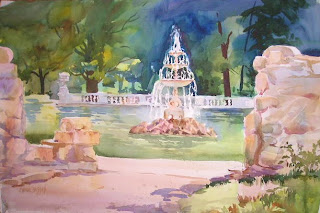
John Singer Sargent's paintings of fountains in Italy first inspired me to seek out fountains as subject matter. This one can be found in Tower Grove Park in South St. Louis, an old Victorian Park conceived by Henry Shaw. The faux ruins are salvage from a hotel that burned in the 1800's.
The ruins serve as a frame of the fountain. Many design elements I've talked about before are present in this painting.
Balance -- Look at the tree trunks in the background and the size of the ruins on both sides of the paper.Line --- The calm, soothing, formal horizontals and verticals, balanced by the oblique lines in the foreground that subtly point to the fountain.
Edge control -- The soft edges within the ruins. Stones are only suggested, and then only some of them.
Contrast -- The darkest darks and lightest lights form around the focal point: the fountain.
Painting is a juggling act. Keeping all the design principles and elements in the air at once is no simple task, but in no other way will a well structured painting result. The key, as always, is in the planning. Value sketches and preliminary drawings make the painting act smoother and more predictable while also allowing for some impromptu changes. Plan like a turtle; paint like a hare.
Monday, December 7, 2009
Hometown Series-Gardens
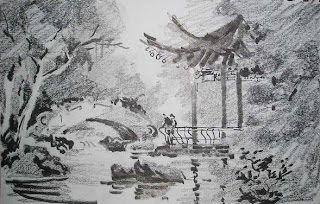
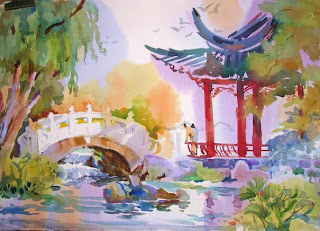
Sunday, December 6, 2009
Painting In the 'Hood

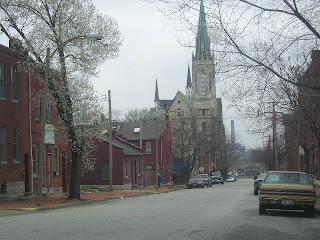
Friday, December 4, 2009
Train Station Series


Thursday, December 3, 2009
Painting in a Series
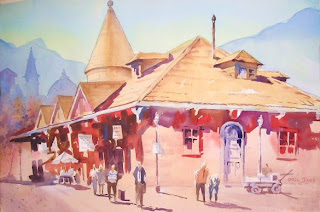
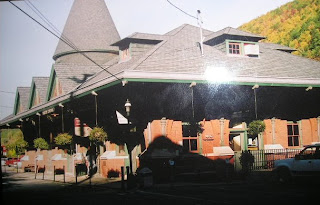
Wednesday, December 2, 2009
Dominance - Line
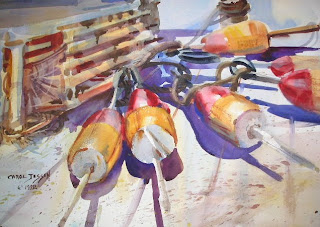
Tuesday, December 1, 2009
Dominance - Line
